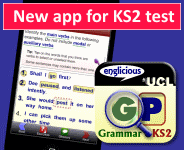Noun identification
In this activity, students work through the criteria for identifying nouns.
Goals
- Practise identifying nouns.
- Recognise linguistic criteria for identifying nouns.
- Remember the list of noun criteria for use and application later on.
Lesson Plan
In this lesson, students move beyond what is called the notional way of identifying nouns as people, places, things, or ideas, to explore grammatical ways of identifying nouns. Although notional definitions can be useful they do not always work. For example, the notional definition of nouns cannot account for words like lack or absence very well.
In Activity 1 in the right hand menu, Slide 1 asks students to categorise a series of tiles as nouns or not nouns. They should use their intuition and what they've already learned. A third column is for uncertain cases. In Slide 2, they are presented with the classic definition of a noun as a person, place, thing, or idea, and asked to categorise the words again.
Then, in Slide 3, students are presented with the first important grammatical criterion for defining nouns. Nouns can be singular or plural. Note that verbs, adjectives, adverbs, conjunctions, and prepositions cannot be singular or plural. The students can now group the tiles using this piece of knowledge.
In Slide 4, students see another criterion for defining nouns, and are asked to group the word tiles again. This time, they should consider whether the word can be possessive.
In Slide 5, the criterion states that nouns can follow the determiners the and a. And in Slide 6, students see that nouns can be replaced by a pronoun.
Some students may notice ambiguity with some example words. For example, tape can be a noun, as in a piece of tape, but also a verb, as in I'll tape these two pages together. Face, run, and show are similar. What does this mean? This illustrates the important point that some word forms can represent multiple meanings and multiple word classes.
In Activity 2, students are provided with an example sentence and a highlighted word in context. Below the example is a list of the criteria for identifying nouns. Students should ask each question, and determine whether the word in context is a noun.
Moving forward, students should remember these criteria for labelling nouns, and use the criteria for identifying nouns in future work and in exams.
Teachers' Notes
Not all nouns will fit every criterion, but a word that fits most criteria is probably a noun. Much of the detective work in grammatical analysis comes from the borderline cases and difficult words. For example, some nouns can't be singular or plural: we don't say two furnitures or many informations (at least in Standard English). Similarly, most proper nouns aren't preceded by a determiner: we don't say the Tony Blair or the Scotland. Professional linguists continue to debate some difficult words, and there may not be a final answer on some of the most tricky ones. With that in mind, the criteria here allow you to analyse a word systematically, and you can trust that if a word's class is difficult to determine based on these criteria, then it just isn't easy to analyse at all!
Welcome!

Englicious is totally free for everyone to use!
But in exchange, we ask that you register for an account on our site.
If you’ve already registered, you can log in straight away.
Since this is your first visit today, you can see this page by clicking the button below.
- Printer-friendly version
- Log in to view or leave comments

